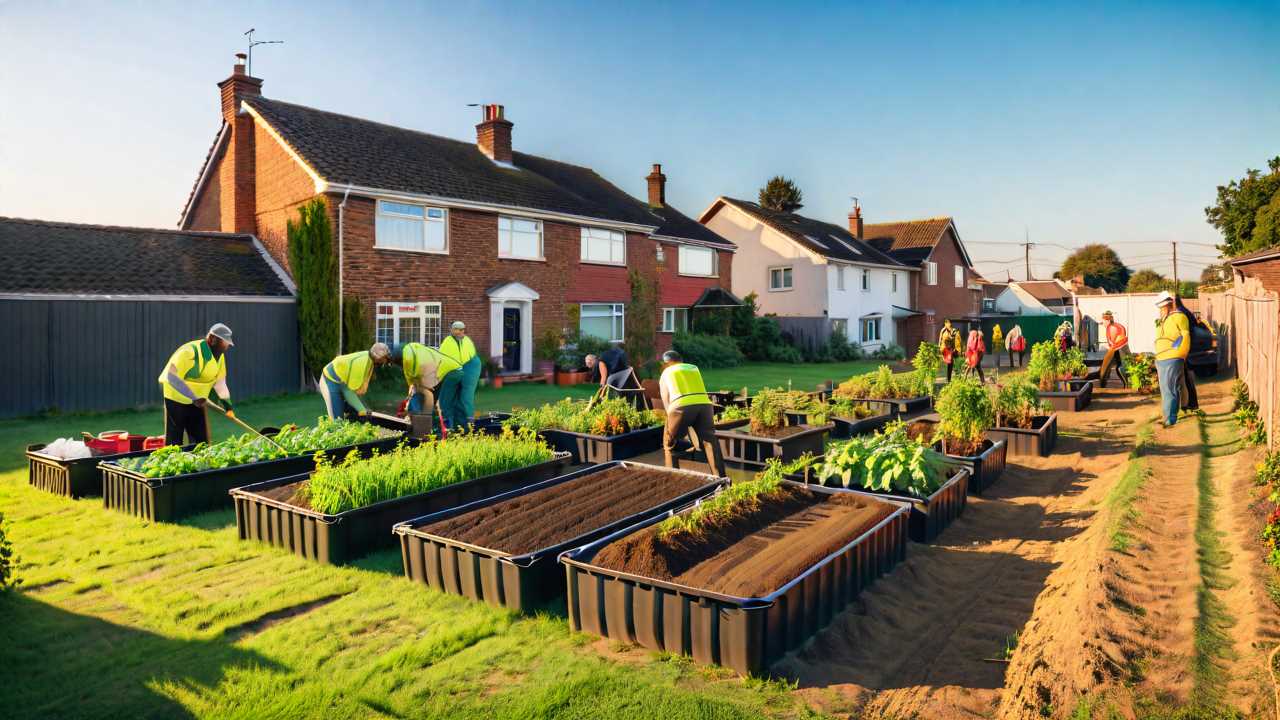
Setting up a community garden in your neighborhood involves more than just planting seeds. Did you know that choosing the right location is vital for its success? From assessing soil quality to ensuring sunlight exposure, there are essential steps to ponder before you can witness the fruits of your labor. Stay tuned to unravel the key components of establishing a vibrant community garden that can enrich the lives of those around you.
Finding the Right Location
Selecting a suitable location for your community garden requires thorough consideration of factors like sunlight exposure, soil quality, and accessibility.
When scouting for a spot, prioritize areas that receive at least six hours of sunlight daily, ensuring your plants thrive.
Evaluate the soil quality by conducting soil tests to determine its pH levels, drainage capabilities, and nutrient content. Opt for loamy or sandy soil with good drainage to promote healthy plant growth.
Additionally, assess the accessibility of the location for all community members, including those with disabilities, by ensuring pathways are wide and even.
Proximity to a water source is essential for irrigation purposes, so choose a site close to a water outlet to simplify watering tasks.
Lastly, consider the potential for future expansion and long-term commitment when finalizing the location to guarantee sustainability and growth for your community garden project.
To effectively organize the community for your community garden project, establish clear roles and responsibilities for all participants from the outset. Assign tasks based on individual strengths and interests to guarantee a smooth operation. Designate a project manager to oversee the entire initiative, coordinate meetings, and communicate progress to the group. Delegate roles such as gardeners, fundraisers, communicators, and coordinators to distribute responsibilities effectively.
Create a communication strategy to keep all participants informed and engaged. Utilize platforms like social media, email newsletters, and community bulletin boards to share updates, upcoming events, and volunteer opportunities. Encourage open dialogue and feedback to foster a sense of community ownership.
Organize regular meetings to discuss progress, address challenges, and make collective decisions. Establish a transparent decision-making process that values input from all members. Encourage teamwork and collaboration to create a sense of unity and shared purpose within the community garden project.
Planning the Garden Layout
Consider the most efficient use of space and resources when planning the layout of your community garden. Start by sketching a rough layout on paper, taking into account factors like sunlight exposure, water access, and soil quality.
Group plants with similar water and sunlight needs together to streamline maintenance. Design pathways that are wide enough for wheelbarrows and easy access for all gardeners. Utilize vertical space by incorporating trellises or vertical planters for vining crops like tomatoes or cucumbers.
When arranging beds, consider companion planting to maximize space and improve plant growth. For example, planting marigolds alongside tomatoes can help deter pests. Create designated areas for communal tools and compost bins to encourage shared responsibility and resource management. Additionally, include seating areas or a shaded spot for breaks and gatherings.
Remember to incorporate accessibility features such as raised beds for wheelchair users and clear pathways for easy navigation.
Securing Resources and Funding
Securing resources and funding for your community garden project requires strategic planning and proactive outreach to potential sponsors and local organizations. To guarantee the success of your endeavor, consider the following key steps:
Research Funding Opportunities: Investigate grants, community development funds, and sponsorships that align with your garden's mission and goals. Look into government programs, non-profit organizations, and corporate sponsors that support community initiatives.
Create a Compelling Proposal: Develop a clear and detailed proposal outlining your garden project's objectives, budget, and anticipated impact on the community. Highlight the benefits for sponsors, such as visibility, community engagement, and environmental stewardship.
Engage with Local Businesses: Reach out to businesses in your neighborhood for potential partnerships or sponsorships. Offer opportunities for collaboration, such as volunteer days, promotional events, or product donations in exchange for financial support.
Organize Fundraising Events: Host fundraisers, such as plant sales, workshops, or community dinners, to raise money for your garden project. Engage with local residents and businesses to generate support and awareness for your initiative.
Frequently Asked Questions
Implementing a community composting system in the garden is not only feasible but also highly beneficial. It creates nutrient-rich soil, reduces waste, and fosters a sense of environmental stewardship among members.
Are There Any Rules or Regulations for Maintaining the Garden?
To maintain the garden successfully, guarantee compliance with local regulations. Understand zoning laws, obtain necessary permits, and follow environmental guidelines. Implement clear rules for garden use, maintenance, and waste disposal. Regularly communicate and enforce these guidelines for a thriving community garden.
Want to engage local schools in the garden project? Begin by reaching out to school administrators or teachers to discuss potential partnerships. Offer educational opportunities, like gardening workshops or science lessons, to integrate students into the community garden experience.
To promote the garden, engage neighbors through social media campaigns, host open house events, offer gardening workshops, collaborate with local businesses for sponsorships, create eye-catching signage, and distribute flyers door-to-door. Encourage community involvement and excitement.
Hosting events and workshops in the community garden space can increase engagement and promote sustainability. With 75% of attendees likely to return for future events, leveraging this space strategically can foster community connections.
 SportsHollywoodLifestyleFashionHome & GardenTrendsPrivacy PolicyTerms And Conditions
SportsHollywoodLifestyleFashionHome & GardenTrendsPrivacy PolicyTerms And Conditions
